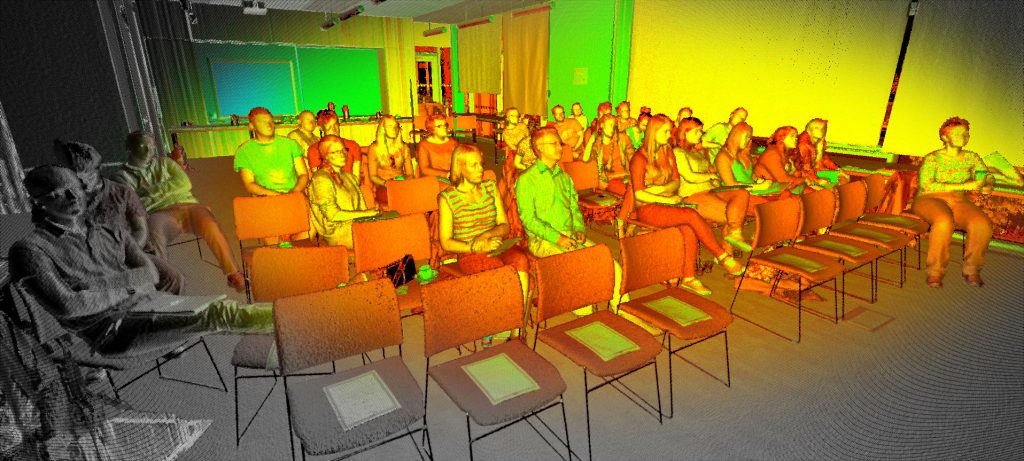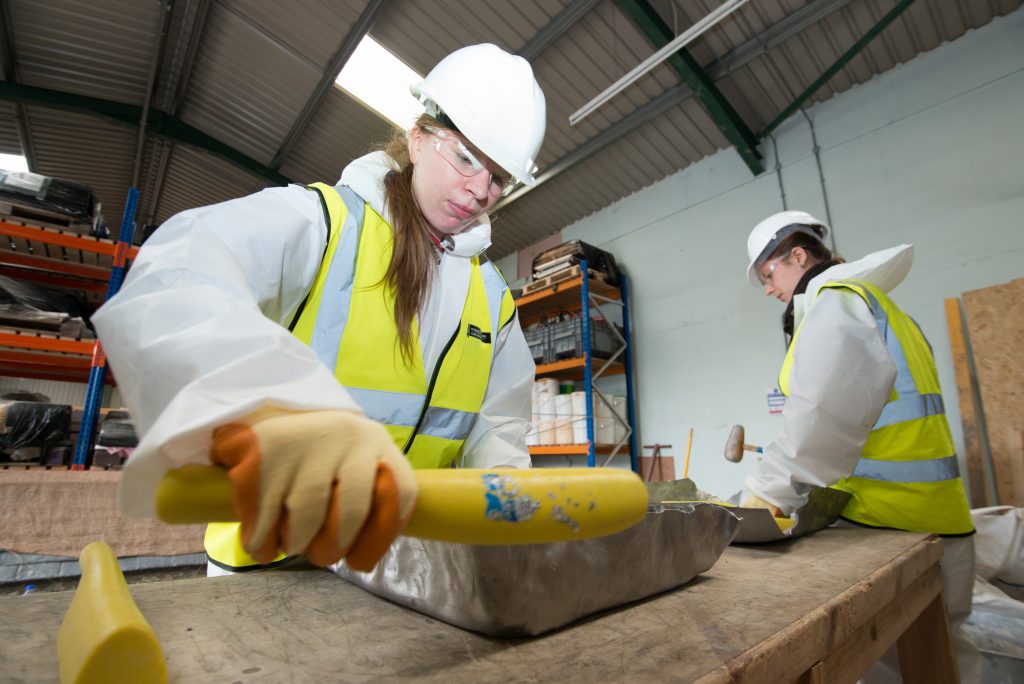Over the last few years, our Conservation Directorate’s ‘Building Conservation Summer School’ has firmly established itself as a highlight in the directorate’s events calendar. This year I was fortunate enough to attend the week-long event and hear about a whole range of conservation related topics. Of course, the mind never wanders far from the day-job, so it was refreshing to make the link between many of the topics covered during the week and our changing climate & the historic environment.
2016’s cohort of #HESSummerSchool students @HistEnvScot pic.twitter.com/iZvYe0QaoK
— Wendy Malkin (@wpmalkin) June 10, 2016
Day 1: Introduction to Conservation
Scotland is blessed with a rich and diverse built heritage. It was appropriate therefore to kick-off Day One with a presentation from our Head of Designations, Dawn McDowell.
She explained how, given that approximately 20% of Scotland’s building stock is of traditional form, there is a great need for guidance on how to maintain these properties and, of course, adapt them to cope with our changing climate. This point was touched upon again, later in the day, by our Technical Research Manager, Roger Curtis, whose team are preparing to release a Climate Change Adaptation Short Guide.
The next part of the day covered my favourite topic, the building stones of Scotland. A series of presentations, delivered by our Head of Technical Research, Ewan Hyslop, delved into the diversity of natural building stone used in Scotland, the decay issues that exist and how to go about repairing said stone.
The link here with climate change is easy to form – as our weather patterns change, so do the decay rates and types of our building stone. More often than not, the changes are detrimental to building stone.
Day 2: Traditional Skills and Materials
Day Two started with one of the most enjoyable events of the week – a hands on traditional skills workshop. Delegates got to try their hands at slating, stone masonry, leadwork, brickwork and joinery. A core principal of HES’s remit is to champion the use of traditional skills in the historic environment, and quite rightly so.
Such an enjoyable morning at the Traditional Skills Workshop. #HESsummerschool @HistEnvScot @welovehistory pic.twitter.com/Ly2rO2MhQ6
— David Harkin (@DMHarkin) June 7, 2016
The morning workshop opened my eyes to the work and craftsmanship that, in the past, has gone into the construction of our historic built environment. Presently, it is essential we keep these skills alive, to help maintain the historic environment in an appropriate fashion. This theme of maintenance is, of course, a key factor in helping to prepare the historic environment to deal with our changing climate.
Focusing on one of the materials we were working with, the use of slate generated some interesting questions about sustainable best practice.
In the past, Scotland could meet its own demands for good quality slate due to a wealth of rich geological resources. However, we now have no operational slate quarries, which means we need to import materials for use in repair and conservation.
Where does it come from now? Welsh slate is fairly common nowadays, as is that imported from Spain. However, there is a slow burning movement pushing for slate to once again be quarried locally in Scotland. From a climate change perspective, this would be sustainable best practice in action – sourcing locally available materials limits the need for transporting goods. Scottish slate would also be more sympathetic, in terms of appearance, when replacing damaged stone in our historical buildings.
Dr Ewan Hyslop consigns salts to room 101 at @HistEnvScot #HESSummerSchool #appliedscience pic.twitter.com/crceBDnfS4
— David Mitchell (@DSM888) June 8, 2016
Day 3: Building Lime
The advantages of using a lime based mortar over cement, in repair and construction jobs with traditional materials, is now widely recognised (and documented in our INFORM and Short Guide publications). In short though, a lime based mortar allows stone masonry to dry more effectively after becoming saturated. Where inappropriate materials such as cement have been used, the stone cannot effectively dry, leading to enhanced rates of erosion. This issue has been exacerbated by our changing climate, with many buildings now exposed to increasing amounts of rainfall.
Day 4: Digital Survey
Day Four was centred on non-intrusive ways of investigating our historical buildings. Maureen Young, one of our in-house Conservation Scientists, gave us a demonstration of the uses of techniques such as thermal imaging and its practical applications. The images this type of study generates are great for showing things like heat loss or damp patches in vulnerable buildings. This information can be used practically, by highlighting areas where new and better energy efficiency practices are required – another strong link to sustainability and climate change.
I should also mention the presentation from James Hepher, our Surveyor / Spatial Analyst with the Digital Documentation Team. James delved into the world of everything 3D, talking about the Scottish Ten Project and the ongoing project looking to digitally record all of the Properties in Care of HES (plus a range of our collections).

The summer school audience was scanned during James’ presentation
Day 5: Climate Change and Fire Prevention
The final day of the week-long event saw presentations from the Climate Change team directly, as well as an in depth look at preventing fires in historic buildings. Mairi Davies, manager of the Climate Change team delivered a presentation providing an overview of HES’s responsibilities and contributions towards tackling climate change. No link needs to be made here, but I would encourage readers to look through the blog to find out more about our teams work, including our efforts to lower the organisations carbon footprint.
The day concluded with a visit to the Glasgow School of Art’s Mackintosh Building. This was the scene of a devastating fire back in May 2014, but now the setting for an extraordinary restoration project that will see the building returned to Mackintosh’ original vision.
Final Thoughts
The week has left me equipped with a stronger knowledge of many of the technical aspects of caring for our historic built environment, as well as new found respect for the skills involved in many conservation practices. It was also equally warming to hear directly from a whole range of industry experts, who are more or less all working under the same roof here at Historic Environment Scotland. Going into the future, it is now imperative that we use this knowledge base and wide array of skills to adapt our historic environment to the ever growing threat from our changing climate.
Any questions? Feel free to get in touch with us on Twitter or Facebook, or comment below.

